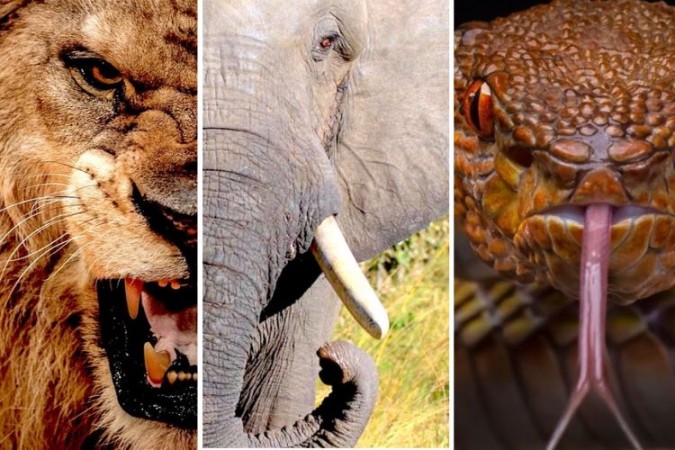
Nature has bestowed upon us a variety of creatures, some of which possess deadly toxins that can be fatal to humans and other animals alike. These creatures, often exquisitely beautiful or unassuming in appearance, wield their toxicity as a means of self-defense or hunting. Let's take a closer look at ten of the most poisonous animals that command our awe and respect.
What Makes an Animal Poisonous?
An animal's poison is typically a substance produced within its body that can cause harm or even death when it comes into contact with another organism. Poisonous creatures have developed this unique defense mechanism over millions of years, allowing them to survive and thrive in their respective ecosystems.
The Box Jellyfish: A Deadly Beauty
Revered for its ethereal grace in the water, the box jellyfish is also infamous for being one of the most venomous creatures in the ocean. Its tentacles are adorned with numerous nematocysts, specialized cells that inject venom into prey, paralyzing and killing them almost instantly.
The Inland Taipan: A Venomous Serpent
Hailing from the remote regions of Australia, the inland taipan, also known as the "fierce snake," boasts the title of the world's most venomous snake. Despite its potency, this elusive serpent rarely poses a threat to humans due to its reclusive nature.
The Poison Dart Frog: Small But Lethal
Residing in the tropical rainforests of Central and South America, the poison dart frog derives its name from the indigenous peoples' use of its toxic secretions to poison the tips of blow darts. Their vivid colors serve as a warning sign to potential predators, indicating danger.
The Stonefish: Camouflaged Danger
Hiding in plain sight in the shallow waters of the Indo-Pacific region, the stonefish is a master of camouflage. It delivers its potent venom through spines on its back, causing excruciating pain, tissue damage, and even death if not treated promptly.
The Cone Snail: A Slow and Deadly Hunter
Beneath the ocean's surface, the cone snail employs a unique hunting strategy. It releases harpoon-like teeth, loaded with a potent cocktail of toxins, to immobilize its prey. While humans are not its intended targets, a cone snail sting can be fatal if left untreated.
The Pufferfish: Delicacy and Danger
Known as a culinary delicacy in some parts of the world, the pufferfish carries a deadly secret. Certain organs of the pufferfish contain a potent neurotoxin called tetrodotoxin, which can lead to paralysis and, in extreme cases, death.
The Blue-Ringed Octopus: Tiny Yet Terrifying
In the azure waters of the Pacific and Indian Oceans, the blue-ringed octopus lurks. Despite its small size, its venom contains a powerful neurotoxin that can cause muscle paralysis and respiratory failure in its victims.
The Deathstalker Scorpion: Deadly Stinger
Scorpions are notorious for their venomous stings, and the deathstalker scorpion is no exception. Found in arid regions, its venom can induce intense pain, fever, and in severe cases, fatalities, particularly in vulnerable individuals. The natural world is full of wonders, and the existence of these incredibly poisonous animals is a testament to the intricate balance that sustains life on Earth. While their venom can bring about death, it also serves as a reminder of the diversity and complexity of our planet's ecosystems.
Nostradamus The Visionary Beyond Boundaries
Five Worst EV Riding Nightmares
Genetic Engineering: Unlocking the Potential of DNA Manipulation